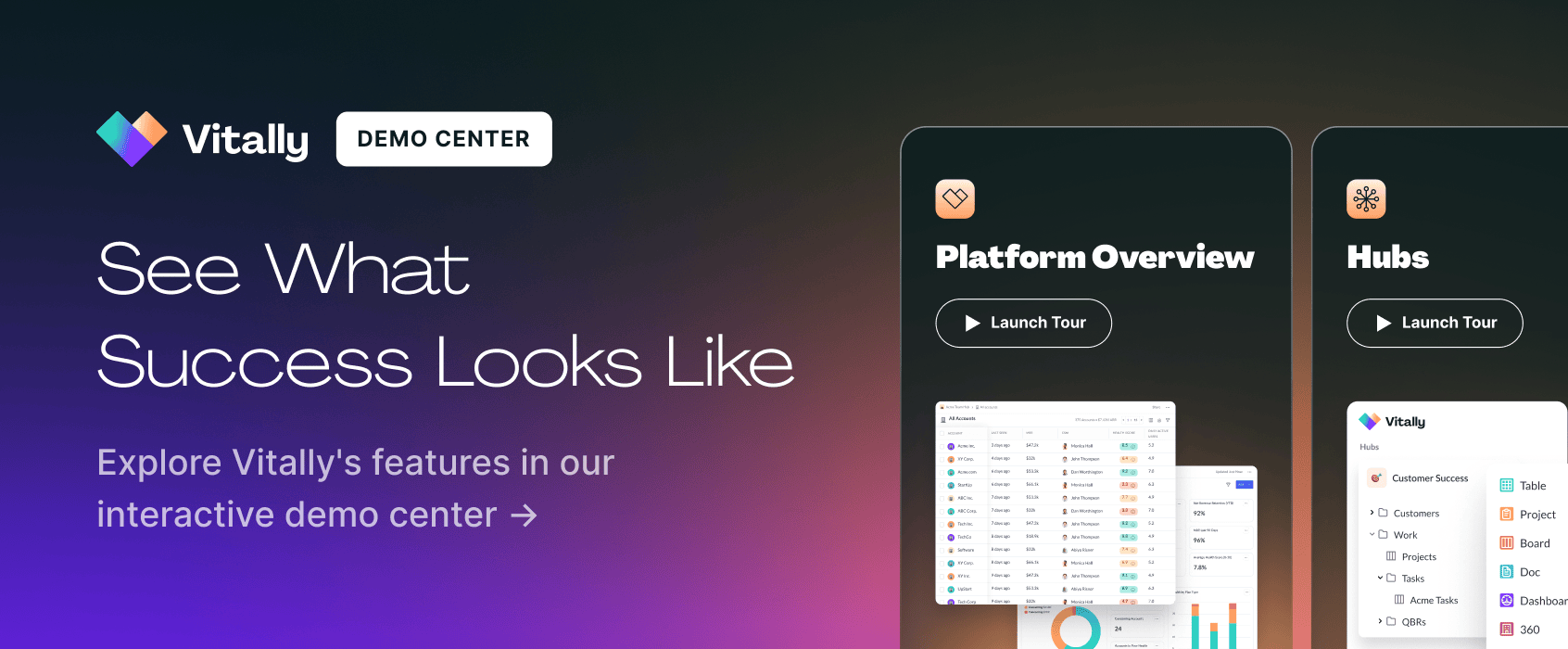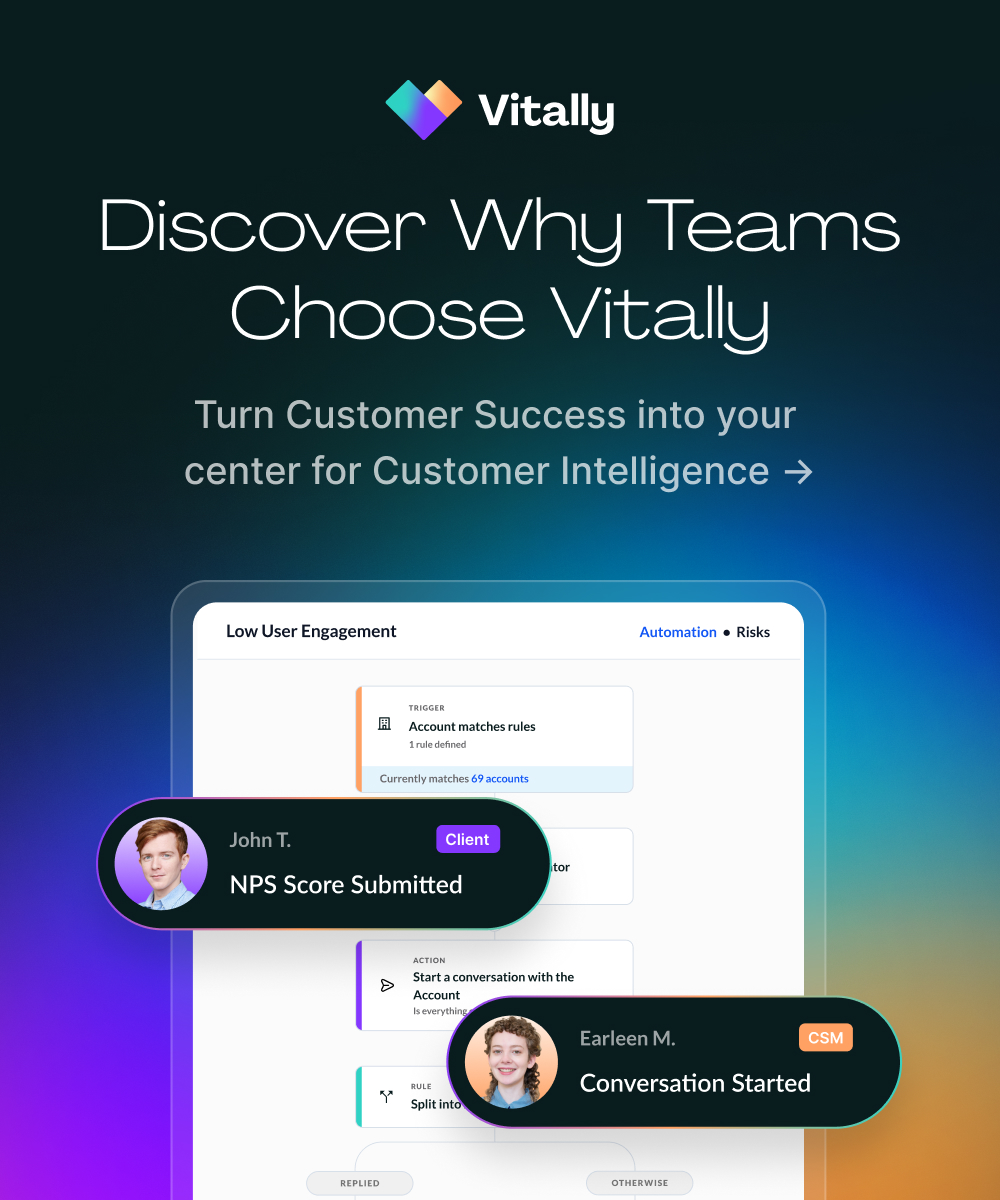
Kelley Turner is the SVP of Global Customer Success at Vitally and a member of the Success Network.
As businesses increasingly rely on customer data to drive strategies across their organizations, customer surveys play an even more pivotal role in gathering actionable insights.
Having seen firsthand how impactful a well-designed survey can be, I wanted to share some ideas on maximizing your survey response rates and driving better results.
6 best practices for customer surveys
One of the best surveys I ever received was from a gym I joined. They sent a survey to each member to understand more on the gym experience, everything from the locker rooms to class availability to what we’d like to see in the future.
What made it so special was that they followed up with every respondent with an outline of their action plan based on the feedback they received. They sent a follow up email, posted results in the locker rooms and had flyers on what they were going to prioritize for investment based on our feedback. It was an incredibly effective way to close the feedback loop and show customers that their input is truly valued.
Here’s my step-by-step guide on how to create customer surveys that achieve Customer Success goals and make your respondents feel like their time was well spent.
1. Start with a clear goal
A common pitfall I’ve noticed in survey creation is the lack of a clearly defined goal. I always say, “Don’t ask about things you’re not able to or willing to change.” Companies should focus on gathering actionable insights that will inform specific improvements.
When customer feedback is tied directly to actionable items — such as product enhancements, customer service improvements, or onboarding processes — it enables businesses to refine their strategies in real time.
In my experience, it’s vital to balance curiosity with a drive toward specific outcomes that may not be visible to customers but are crucial for them to gain full value.
Related: Power Your Business Strategies and Customer Experiences With Custom Surveys
2. Recognize that structure is strategy
Survey length is a critical factor in determining response rates. I always recommend keeping surveys short. A well-structured survey keeps customers engaged without overwhelming them.
Also, open-ended questions provide valuable detail but should be used selectively. I often incorporate open-ended text fields, even though they’re challenging to analyze, because they provide rich insights. [Pro tip: ChatGPT can be incredibly helpful in boiling down text responses into trends/themes. Extra points if you ask it to provide you insights in bullet points that are suitable for a slide presentation.]
Keep in mind that choosing the right response types is essential too. The format directly influences what you get back from respondents. Here are some quick tips for structuring high-response surveys:
- Limit questions to fewer than 10 to maximize response rates
- Mix question types like Likert scales, multiple-choice, and open-ended questions to gather both quantitative and qualitative feedback
- Prioritize key areas to avoid survey fatigue and focus on what matters most
3. Align timing with purpose
Survey fatigue is real and it can severely impact response rates and feedback quality. I’ve seen them become “noise” when sent too frequently, at the wrong times, or without additional context. That is why finding the right balance in survey frequency and timing ensures higher-quality responses.
Here are some ways you can align survey timing with purpose:
- Automatically send one after onboarding completion to capture initial impressions
- Send surveys post-purchase to gather fresh, relevant feedback on both your offering and the buying experience
- For service interactions, a brief survey following a resolution gauges satisfaction with support provided

4. Turn responses into action
A key part of any survey process is closing the feedback loop. After gathering feedback, it’s essential to follow up and show customers how their input has been used.
I always aim to set clear expectations with respondents about how they’ll hear back about the survey results. Customers want to know their five minutes meant something, so here’s my approach:
- Acknowledge feedback immediately with a thank-you
- Analyze and act on the data, identifying trends and implementing changes where possible
- Communicate the changes through emails, updates, or announcements
Related: 8 Survey Questions CS Teams Should Ask Their Customers, As Told by 3 Experts
5. Maximize both reach and engagement
Aligning the survey channel with the customer experience is crucial.
For example, in-app surveys are great for product-specific feedback, while email might work better for general satisfaction surveys. Incentives can also help boost response rates. Offering rewards signals to customers that we genuinely value their feedback.
Think critically about the persona(s) for your survey before sending. For example: are you looking to get user responses or leader/buyer? In-app could work well for users but will likely miss out on more senior leaders who are less in the platform day to day.
Some popular options include:
- Discount codes for future purchases
- Exclusive content or early access to new features for B2B customers
- Charitable donations, which can appeal to socially conscious respondents
6. Use data to personalize content
Personalization is a powerful tool in creating more effective surveys. By using data, we can tailor questions to reflect each customer’s recent experiences.
For instance, asking specifically about a product feature the customer just used makes the survey feel relevant and personalized, increasing engagement.
Personalization can also extend to the delivery channel. By analyzing customer behavior, we can decide whether in-app messages, emails, or even text messages are the most effective means of reaching our audience.
The future of customer surveys
By following these best practices — setting clear goals, keeping surveys concise, avoiding survey fatigue, closing the feedback loop, maximizing your reach, and personalizing with data — businesses can enhance their feedback process significantly.
Side note: Vitally Custom Surveys make it easier to implement these strategies by helping you streamline distribution, analyze customer insights, and deliver personalized follow-ups.
At the end of the day, customers are curious and they love being heard. More than anything, they want to know that the five minutes they took to complete your survey was worth their valuable time. So be sure to think about that before you hit “send” on your next survey.










